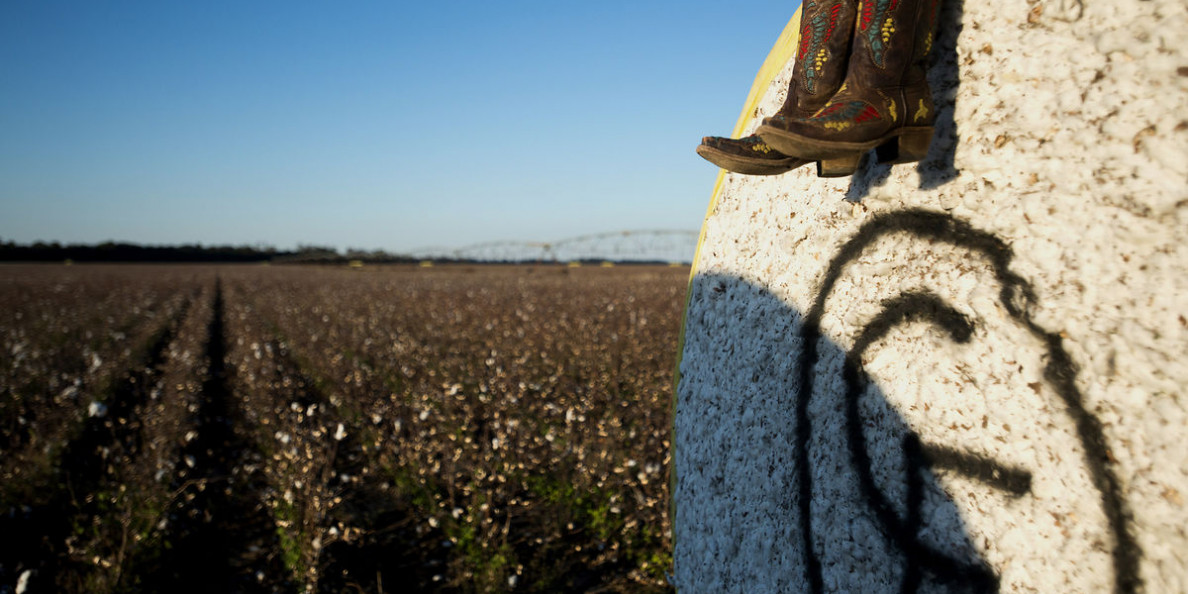July 14, 2023
- Outside Markets Rallied Upon Softer than Expected CPI Reading
- WASDE Came as a Slightly Bearish Surprise to Traders
- U.S. Export Sales Dismal for the Week Ending July 6
- Excessive Heat Present Over a Large Portion of the Southwest
Future prices moved in rollercoaster fashion this past week with December finishing up 180 points for the week. Friday the market posted a positive move of 129 points, only to be followed by Monday’s descent of 192 points. Tuesday’s market action was the most surprising of the week as December futures rallied 287 points. This had some analysts perplexed as this was the day prior to the WASDE release and more times than not, a quiet trading day. Wednesday the market rallied above 83.00 cents per pound based on the December contract but faltered back towards the end of the day. Thursday’s December close of 81.68 placed the contract on the higher end of the scale looking back at the past 30 days. It seems the US dollar weakness coupled with talk of new business outweighed a slightly bearish WASDE report. Total open interest increased 6,111 contracts to 177,984.
Outside Markets
News in outside markets this week provided a glimmer of hope where the U.S. economy is concerned. The Consumer Price Index (CPI) rose 0.2% in June, lower than what was expected. This is the smallest 12-month increase since March 2021. The index component for shelter was an outstanding contributor, accounting for 70 percent of the increase. Decreased energy prices also helped moderate the increase. Although the better than anticipated inflation news helped stocks rally, it is still likely the Fed will raise interest rates at the next Federal Open Markets Committee (FOMC) meeting at the end of the month. Crude oil was up significantly for the week, providing an additional boost to cotton prices. Major indexes were also up, with the NASDAQ and S&P 500 setting 52-week highs. The U.S. Dollar toppled this week, hitting a 52-week low, helping boost commodities.
WASDE
The WASDE came as a slightly bearish surprise upon its Wednesday release. For the 2022/23 crop year, U.S. production was unchanged at 14.47 million bales. Exports were lowered 100,000 bales to 12.9 million bales, ending stocks were raised 50,000 bales to 3.25 million bales, and use was increased 50,000 bales to 2.05 million bales. Lower exports were also not expected for the 2023/24 crop on the July report. U.S. exports were reduced by 250,000, bringing the total expected exports to 13.75 million bales. This flowed into ending stocks, which increased by 300,000 bales to 3.8 million bales. Production was unchanged in 2023/24 at 16.5 million bales.
The world side of the balance sheet saw considerable changes. Heading into the end of the 22/23 marketing year, ending stocks on the July report were increased by 1.06 to 93.95 million bales. This was a result of larger production seen in Australia and Brazil that outweighed increases in domestic use. For the 2023/24 crop year, world production was raised 120,000 bales due to larger crops in Pakistan. World consumption was lowered by 550,000 bales totaling 116.45 million bales. Beginning stocks were 1.1 million bales higher. Ending stocks also rose 1.7 million bales to 94.52 million bales.
Export Sales
U.S. export sales were dismal for the week ending July 6. A net total of 23,100 Upland bales were sold for the 2022/23 crop year and 51,000 bales for the 2023/24 crop year. The biggest buyer for the week was Bangladesh, booking a total of 18,200 bales, followed by Vietnam with 5,600 bales, Honduras with 3,200 bales, Taiwan with 2,000 bales, and Turkey with 1,900 bales. A total of 208,300 bales were exported for the week, down 20 percent when compared to the previous week. This is still behind the pace needed to reach the newly updated USDA export estimate of 12.9 million bales. Sales of Pima increased compared to the week prior. For the 2022/23 crop year a net total of 6,800 Pima bales were sold and for the 2023/24 crop year 300 bales were booked. Shipments of Pima slowed for the week, with a total of 1,400 bales exported.
Weather and Crop Progress
Hot, dry temperatures have been present throughout West Texas, Oklahoma, and Kansas this past week. Scattered storms helped bring some moisture to the dry areas, but more will be needed as the crop progresses. South Texas has also had excessive heat, which has helped as the crop has started to mature rapidly. It should be mostly sunny in the coming week, meaning harvest activities in the southernmost portion can proceed without interruption. This week’s Crop Progress and Condition report showed that Squaring and Boll Setting have kept on the usual pace, with 55% of the U.S. crop squaring and 17% setting bolls. The condition of the crop has deteriorated from the week prior. For the country, 7% of the crop is rated as “Excellent”, 41% as “Good”, 27% as “Fair”, 16% as “Poor”, and 9% as “Very Poor”.
The Week Ahead
The release of the WASDE provided the market with fresh data to trade upon. Next week should be a little quieter after the big week of fundamental and macroeconomic data we had this week. Outside markets will still be a point of focus, with much of the attention shifting to the decision the Fed will make at the FOMC meeting on July 25 and 26. Otherwise, the Crop Progress and Condition and Export Sales Reports will continue to be focal points where supply and demand is concerned.
- Friday at 2:30 p.m. Central – Commitments of Traders
- Monday at 3:00 p.m. Central – Crop Progress and Condition Report
- Thursday at 7:30 a.m. Central – Export Sales Report
- Thursday at 2:30 p.m. Central – Cotton On-Call
